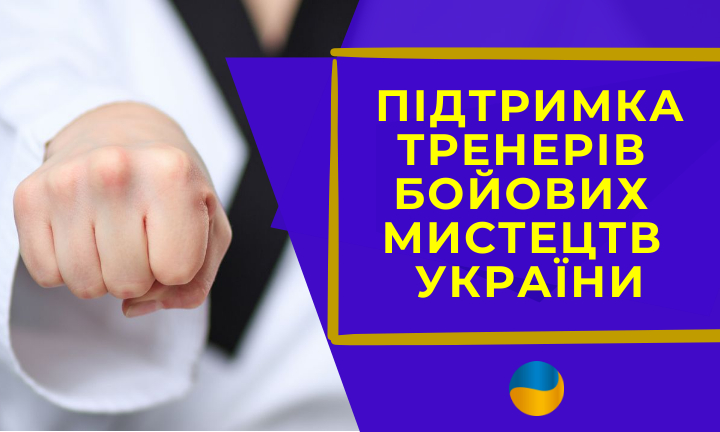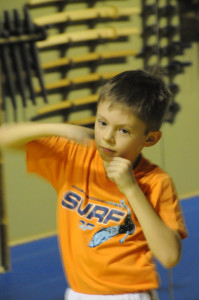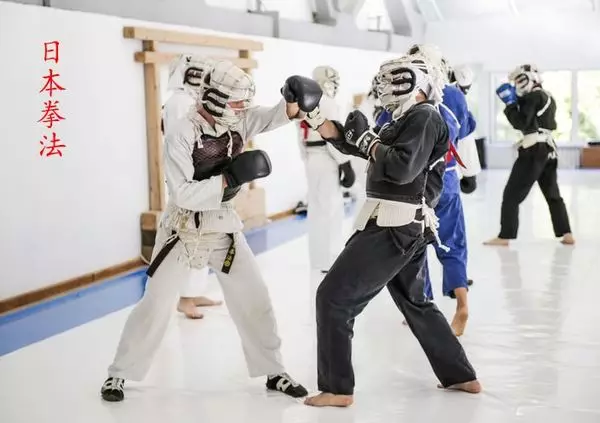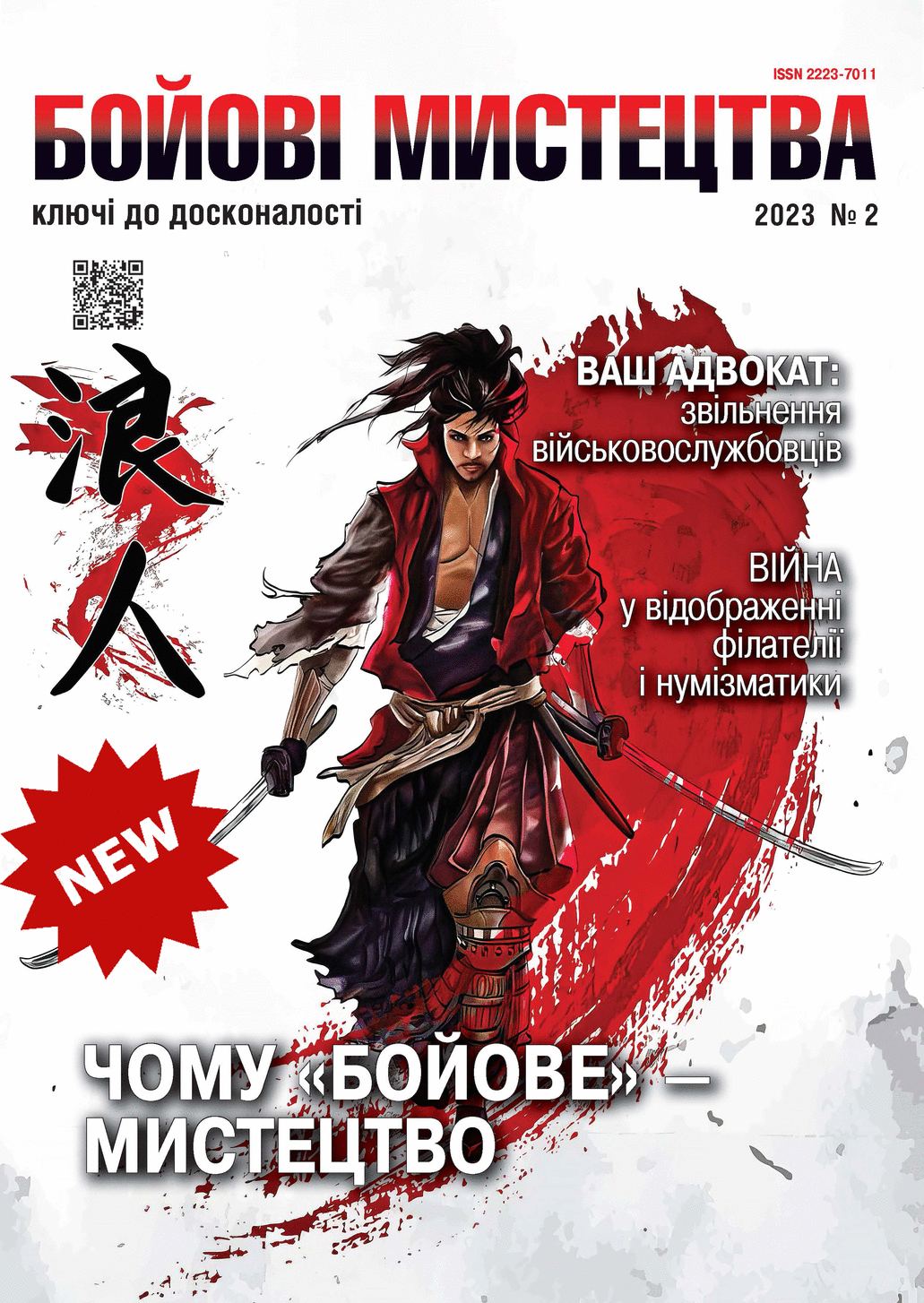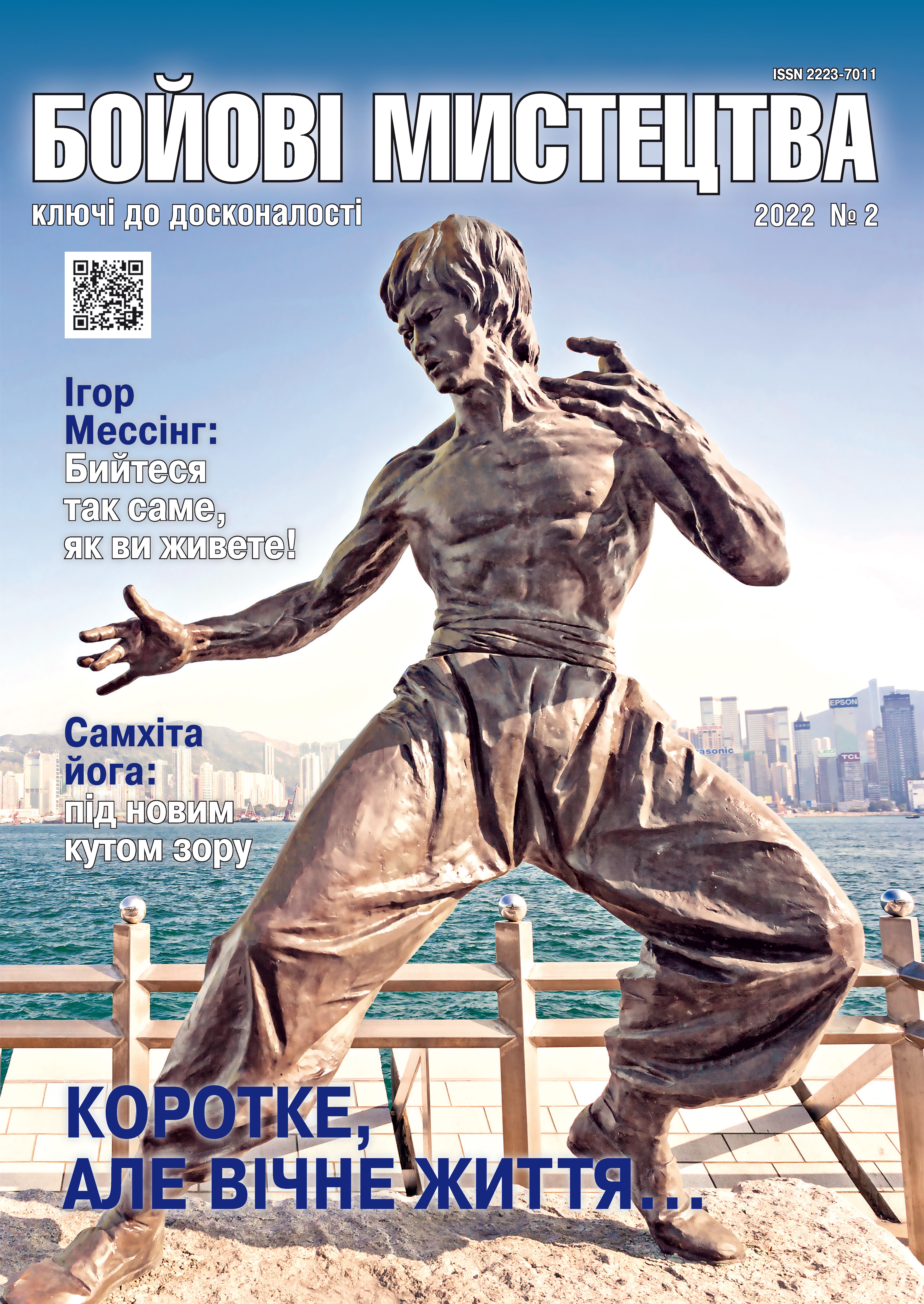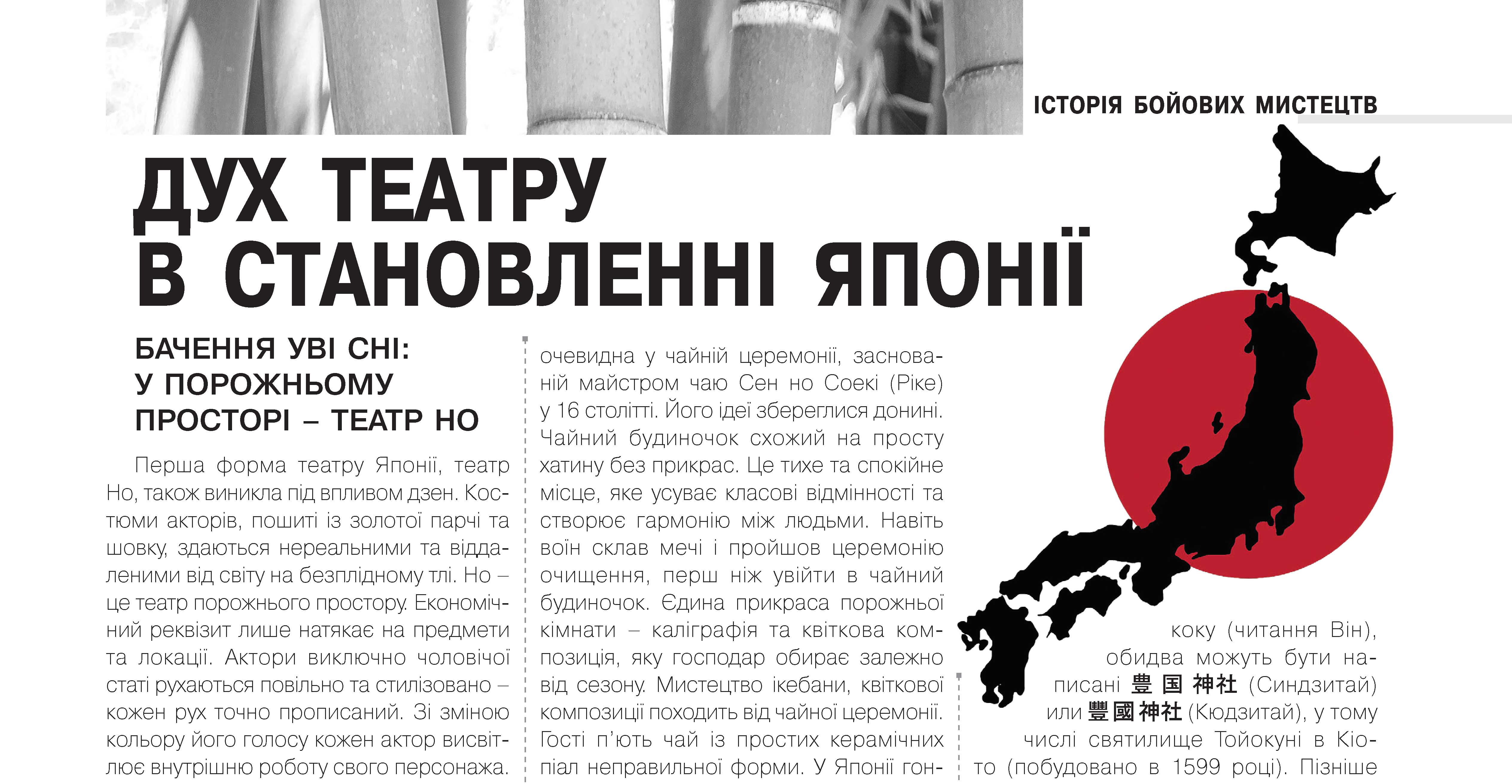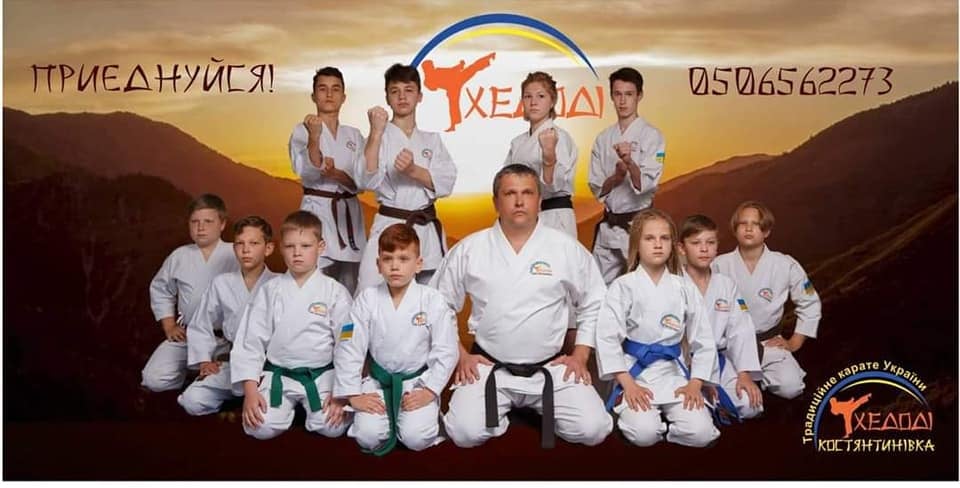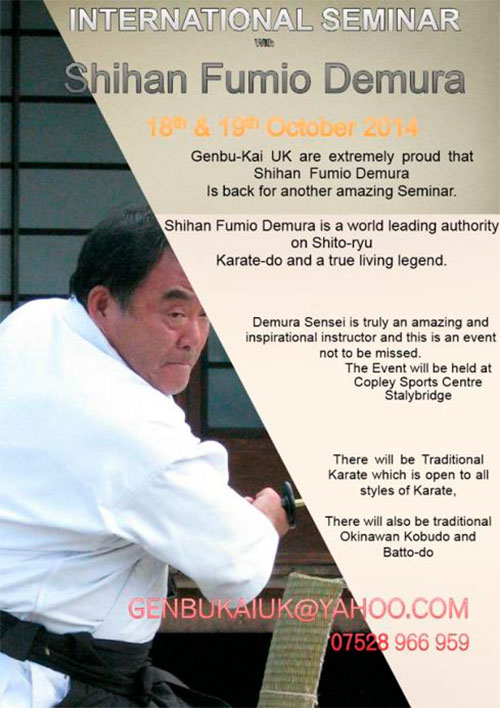
On October 18-19 Bushinkai is attending a seminar with Shihan Fumio Demura 9th Dan hosted by Sensei Julian Mallalieu.
Fumio Demura (出村 文男) is a Japanese master of Karate and Kobudo and was Pat Morita’s (Mr Miyagi) martial arts stunt double in the first four Karate Kid movies. He holds the rank of 9th dan in Shitō-ryū Karate.
Demura was born on September 15, 1938, in Yokohama, Japan. At the age of 9, he began training in karate and kendo under an instructor named Asano. At the age of 12 he started training under Ryusho Sakagami in Itosu-kai (Shito Ryu) Karate.
Demura received his 1st dan black belt in 1956, and won the East Japan Championships in 1957. In 1959, he began training in Kobudo under the direction of Taira Shinken.
He has also trained with Shorin Ryu (Kobayashi) grandmaster Chosin Chibana, Matsubayashi Ryu grandmaster Shoshin Nagamine, Nihon Jujutsu grandmaster Shizuya Sato (10th Dan Kokusai Budoin) and Yoshinkan Aikido grandmaster Gozo Shioda (10th Dan Kokusai Budoin).
In 1965, Demura came to the United States, representing the Japan Karate-do Itosu-kai. From his base in southern California, he became well known for his karate and kobudo skills. In 1971, he was ranked 5th dan, and he remained at that rank until at least 1982.
Through the 1970s and 1980s, Demura wrote several martial arts books, including: Shito-Ryu Karate (1971), Advanced nunchaku (1976, co-authored), Tonfa: Karate weapon of self-defense (1982), Nunchaku: Karate weapon of self-defense (1986), Bo: Karate weapon of self-defense (1987), and Sai: Karate weapon of self-defense (1987).
SAI
In the 1980s, Demura became involved in the Karate Kid series of films. He was the stunt double for Pat Morita, who played Mr. Miyagi. Demura has appeared in several films and documentaries, including: The Warrior within (1976), The Island of Dr. Moreau (1977), The Karate Kid (1984), The Karate Kid, Part III (1989), Shootfighter: Fight to the death (1992), Rising Sun (1993), The Next Karate Kid (1994), Masters of the martial arts (1998, presented by Wesley Snipes), Mystic origins of the martial arts (1998), Modern warriors (2002), XMA: Xtreme Martial Arts (2003) and Ninja (2009).
What is Batto-Do?
The Batto-Do techniques practiced by members of the International Batto-Do Rengo Kai (Alliance) and the Society for the preservation ofToyama-Ryu Batto-Do have a long history. It includes techniques and variations of techniques used by the Samurai as well as modem era Japanese soldiers.
The name Toyama Ryu comes from the military school at which these techniques were codified and studied by the Toyama Military Academy. Officially known as the Rikuguin Heigakko-Ryu Toyama Gakko Shucho-Jo, it was formed as a branch school for Army officers in 1873. It was modeled after European military academies such as the French and Prussian military academies. Early students trained in a variety of studies related to military tactics and such skills as Kendo, Judo, horsemanship, marksmanship and physical training, It is also interesting to note the school was the home for the Army’s school of music, and that students were also trained as military musicians. In 1875 the school became the Japanese Army’s Military Preparatory School and came under control of the Army Ministry.
Prior to World War II the Toyama Academy was renowned as a school which produced outstanding officers who were exceptionally physically fit. The Academy had many quest instructors, some of whom had been samurai prior to the Meiji Restoration. Two famous kendo instructors at the school were Takano Sasaburo and Nakayama Hakudo. In addition to his kendo expertise, Nakayama Sensei was a recognized expert in Omori Ryu Iaido, and the head of the Shimomura-ha branch of Muso Jikiden Eishin Ryu Iaido. Nakayama Sensei greatly influenced the swordsmanship training at the Academy. Nakayama Sensei would later go on to found one of the most widely practiced styles oflaido today, the Muso Shinden Ryu.


